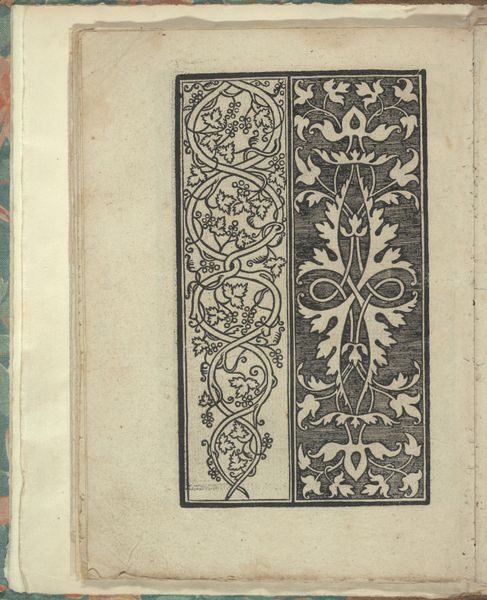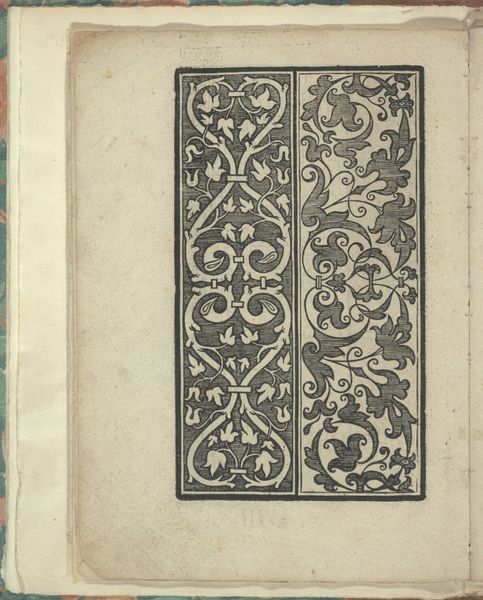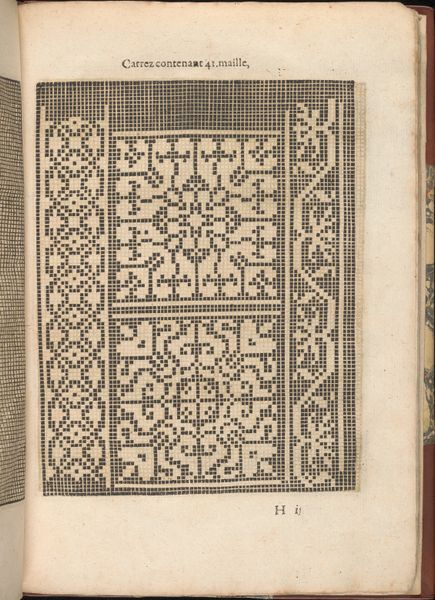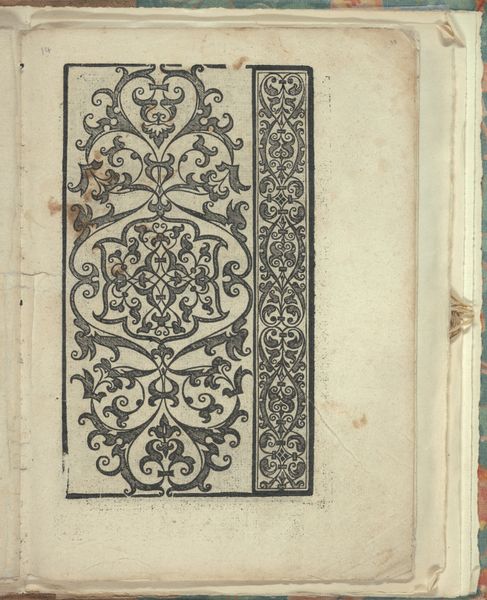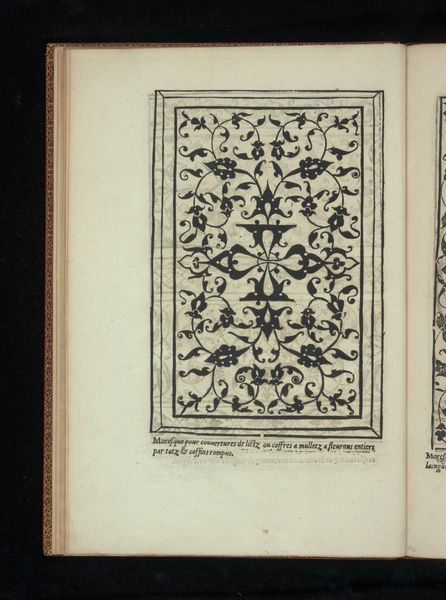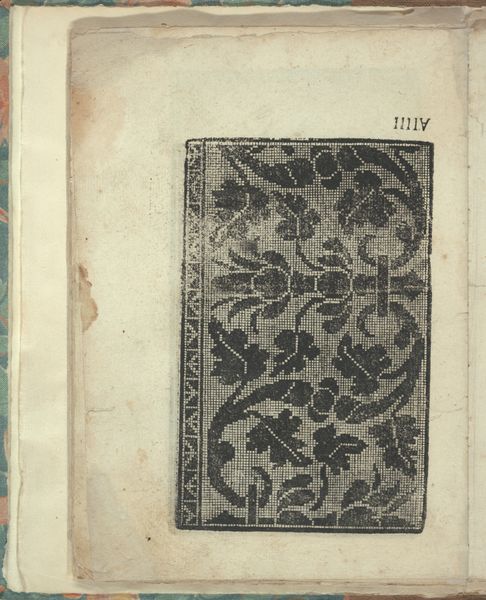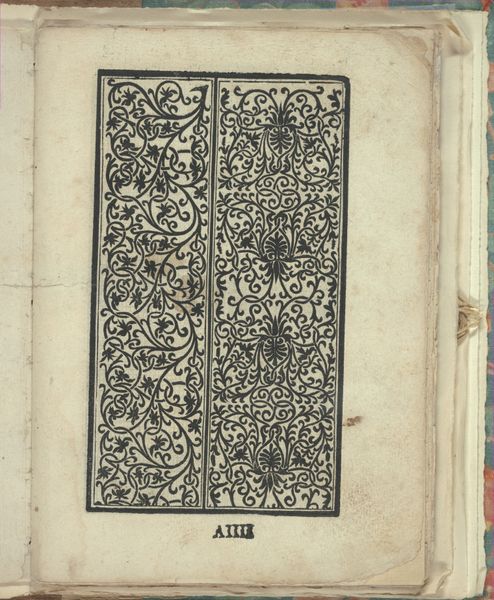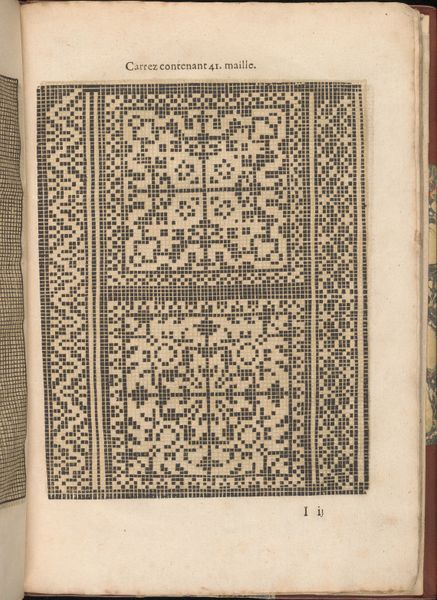
Opera Nova Universali intitulata Corona di racammi, page 11 (recto) 1530
0:00
0:00
drawing, print, woodcut
#
drawing
# print
#
book
#
11_renaissance
#
geometric
#
woodcut
#
line
Dimensions: Overall: 8 7/8 x 6 7/8 in. (22.5 x 17.5 cm)
Copyright: Public Domain
Editor: This is page 11 from "Opera Nova Universali intitulata Corona di racammi," created by Giovanni Andrea Vavassore in 1530. It’s a woodcut, a design for embroidery patterns printed in a book. The symmetry is striking, almost mesmerizing. What do you see in this piece? Curator: I see more than just a pattern. This book was part of a larger social and economic phenomenon. These designs empowered women, particularly within the domestic sphere. Embroidery was a source of income, a form of agency. Does this shift your perception of the geometric design? Editor: It does! I hadn’t considered it in terms of women’s work or empowerment. The book provided the means, like a toolkit, for making a livelihood. Curator: Exactly! The circulation of these books facilitated a kind of visual literacy and economic opportunity. How do you see this fitting into a broader historical narrative of women's labor? Editor: It’s a really interesting angle. I’d naively seen the print as a decorative object but understanding its place within the context of early modern female economies provides new avenues for consideration and situates women as active agents, and the designs become like tools in a fight for autonomy. Curator: And the geometric design becomes charged with intention and social meaning, no longer just decorative, but functional and potentially subversive. Editor: It’s amazing to think about how one small page in a pattern book can hold so much historical weight and complexity. Thanks for helping me see that. Curator: My pleasure. These historical objects ask important questions about women's role, especially concerning labour, artistry, and the creative economy.
Comments
No comments
Be the first to comment and join the conversation on the ultimate creative platform.
